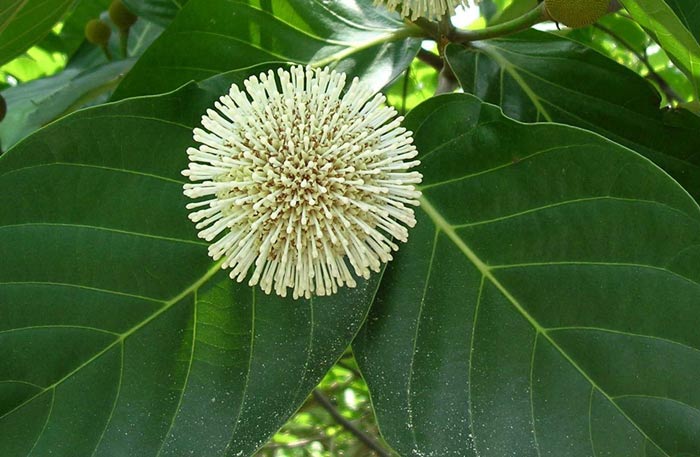Neonauclea reticulata
The false Indian almond is mainly distributed in the Philippines and Taiwan, and can be found in the primary forests of southern and eastern Taiwan and Orchid Island. This evergreen tree blooms at night during the summer, and its terminal spherical capitula burst into beautiful white flowers that resemble fireworks, making them particularly eye-catching in the quiet night.
For the Tao people living on Orchid Island, the hard and rot-resistant wood of the false Indian almond is an important material for making traditional fishing boats. It is often used to construct the keel at the bow and stern of the boat, providing a stable structure for the vessel. In addition, the wood of the false Indian almond is also used to make paddles, as well as building materials for houses and weaving tools. Before the “Fish-Calling Festival,” the tribe members would cut the trunk of the false Indian almond into sections of round logs and place them along the coast as supports for pushing the boats ashore. There is even a traditional custom that if the leaves of the false Indian almond accidentally split into two pieces during the process of cooking flying fish, the entire pot of flying fish must be discarded. This demonstrates the deep respect and special affection the tribe holds for the false Indian almond, making it an extremely important ethnic plant.
The false Indian almond is an evergreen tree with drought, wind, and salt tolerance, making it an important tree species for coastal windbreak and sand fixation. Its fruit is a spherical aggregate fruit composed of multiple capsules. When ripe, it contains winged seeds that can be dispersed by wind and water.
The false Indian almond trees in this museum are planted in the Orchid Island Area and Littoral Forest Area of the Botanical Garden.
